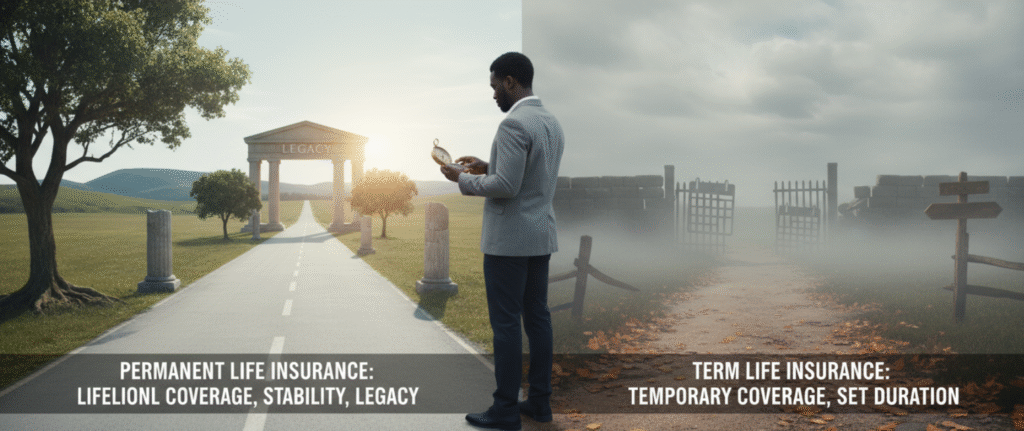
When’s the Best Time to Get Life Insurance? The short answer: when you’re alive! But let’s dive deeper because the decision to secure life insurance is far more than checking a box; it’s one of the most impactful financial choices you’ll ever make. Imagine yourself in year one of adulthood, bursting with potential yet blissfully unencumbered by mortgages, dependents, or complex tax strategies. You’re young, healthy, and (let’s be honest) a bit invincible, so why think about death benefits now? Because this is precisely the window when life insurance is most affordable and, paradoxically, most powerful. This is a key step in how to build generational wealth.
Securing coverage in your twenties or early thirties locks in premiums at rock bottom rates. Insurers underwrite based on your current health and age, so the best time to capture the lowest possible cost is before life’s wear and tear, marathon training, stress fueled workweeks, or that unexpected surgery begins to nudge your mortality metrics upward. More importantly, starting early guarantees protection for your loved ones at a moment’s notice. Should an unforeseeable accident or illness strike, your policy steps in to cover debts, everyday expenses, and the mortgage that anchors your home. Rather than saddling your spouse or children with a financial avalanche, you grant them breathing room to grieve, heal, and rebuild without fear of foreclosure or income loss. It’s not just prudent, it’s deeply responsible.
As life unfurls, jobs change, families grow, and assets accumulate, you’ll find yourself maxing out TFSAs, RRSPs, and other tax advantaged vehicles. But what if you reach your registered account limit and still crave additional tax sheltering? Enter permanent life insurance: a dual-purpose financial instrument that delivers both a guaranteed death benefit and a cash value component that grows, tax deferred, over time. While permanent policies command higher premiums, their cash surrender value can be borrowed against in times of need, business ventures, real estate down payments, or unexpected medical bills acting as a private, tax efficient line of credit.
Despite what you may have heard, life insurance need not break the bank. A 30-year-old in good health can secure a $500,000, 20-year term policy for roughly the price of a daily latte, sometimes as little as $20 per month. That payout could clear a mortgage, pay off student loans, fund your children’s education, and maintain household expenses for years, all tax free. Contrast that with the alternative: relying on high interest debt or worse, a GoFundMe campaign, to cover final expenses. Such scenarios leave grieving families vulnerable, forced to navigate crowdfunding platforms at their darkest hour. Affordable life insurance transforms financial chaos into a dignified transition, preserving stability when it matters most. This is a great way to pay off debt and build wealth.
Yet many Millennials balk at the notion of paying for something they “hope never to use.” They overestimate premiums by up to 80%, assuming that medical exams and protracted underwriting make the process onerous. In reality, simplified issue products abound online applications, no blood draws, coverage limits up to $1 Million, and approvals within hours. When convenience, speed, and affordability converge, there’s simply no excuse to delay.
Navigating the life insurance marketplace can feel like wandering a luxury car showroom, dozens of models, dozens of features, and a bewildering price spectrum. To simplify, policies generally fall into two categories: term and permanent.
- Term Life Insurance offers coverage for a finite period, typically 10, 20, or 30 years at level premiums. Think of it as renting protection for specific life stages: covering a mortgage’s amortization schedule, ensuring your spouse’s income replacement during child rearing years, or shielding your business partnership by funding a buy sell agreement. When the term ends, so does coverage, unless you convert the policy often without further medical underwriting into permanent insurance. Its allure lies in cost effectiveness: a 20-year, $500,000 policy for a healthy 30-year-old might run as little as $17.10 per month. Should the unthinkable happen in year six, that tiny total premium of roughly $1,230 delivers half a million dollars to your beneficiaries, a 406% return on investment.
- Permanent Life Insurance, encompassing whole life and universal life, provides lifelong coverage with a built-in savings component. A portion of each premium funds a cash value account that grows tax deferred and can be accessed via policy loans or withdrawals. Dividends paid by participating whole life policies can augment this cash value further, reduce future premiums, or purchase additional paid-up coverage. Permanent insurance shines for high-net-worth individuals seeking estate planning tools: funding estate taxes, equalizing inheritances, or creating private family trusts. It also serves as a complementary tax strategy when registered account space is exhausted.
For most Canadians, a pure term policy or a layered approach combining term and permanent coverage best aligns cost with coverage needs. Consider a typical scenario: a 35-year-old family breadwinner needs $500,000 to pay off existing debts and provide income replacement. Their mortgage, however, has only 15 years remaining. A prudent solution is a $400,000, 15-year term policy to match the mortgage payoff timeline, paired with a $100,000 permanent policy to ensure lifelong protection for final expenses and legacy planning. This “layering” strategy minimizes premiums where temporary needs exist while retaining a permanent death benefit for as long as you live.
Underwriting hinges on your health profile at application. If you have a family history of serious illnesses like cancer, Alzheimer’s, heart disease, securing a longer-term policy or permanent coverage while you’re in peak health is paramount. Even minor shifts in medical metrics; cholesterol, BMI, blood pressure can elevate your risk class and inflate premiums. The best health you’ll ever have is the health you have today, delaying coverage risks closing the window on your most favorable rates.

Life insurance transcends its core function of risk transfer. It can underpin a host of strategic financial goals:
- Debt Elimination: Erase mortgages, car loans, lines of credit, and student debts without liquidating assets or depleting savings.
- Income Replacement: Provide a tax-free stream of capital to sustain your family’s lifestyle, cover schooling costs, or facilitate a career pivot.
- Business Continuity: Fund buy sell agreements or key person insurance to stabilize corporate ownership and protect against sudden leadership gaps.
- Estate Equalization: Distribute wealth equitably among heirs, especially when illiquid family businesses or real estate assets complicate probate.
- Philanthropic Legacy: Establish or fund charitable trusts and foundations, leveraging death benefits to amplify social impact.
Life insurance is not an expense you hope to minimize; rather, it is an investment you hope to never fully realize because its greatest triumph is enabling your family to thrive, not just survive, in your absence. The key lies in choosing the right policy at the right time, aligning premium budgets with coverage needs and long-term goals. A Life Insurance Broker, operating under a fiduciary standard, can illuminate the differences between term and permanent products, guide you through underwriting nuances, and design a layered plan that evolves with your life’s chapters. This is part of legacy planning for young professionals.
Don’t let uncertainty rule your financial destiny. Act today while you enjoy discounted rates and optimal insurability to secure comprehensive, cost-effective coverage that grows with you. Contact a licensed life insurance broker to explore tailored solutions that protect your family, preserve your assets, and unlock powerful tax planning benefits. After all, the best time to get life insurance is unequivocally now, when you’re alive, ambitious, and ready to transform peace of mind into a lasting legacy.

